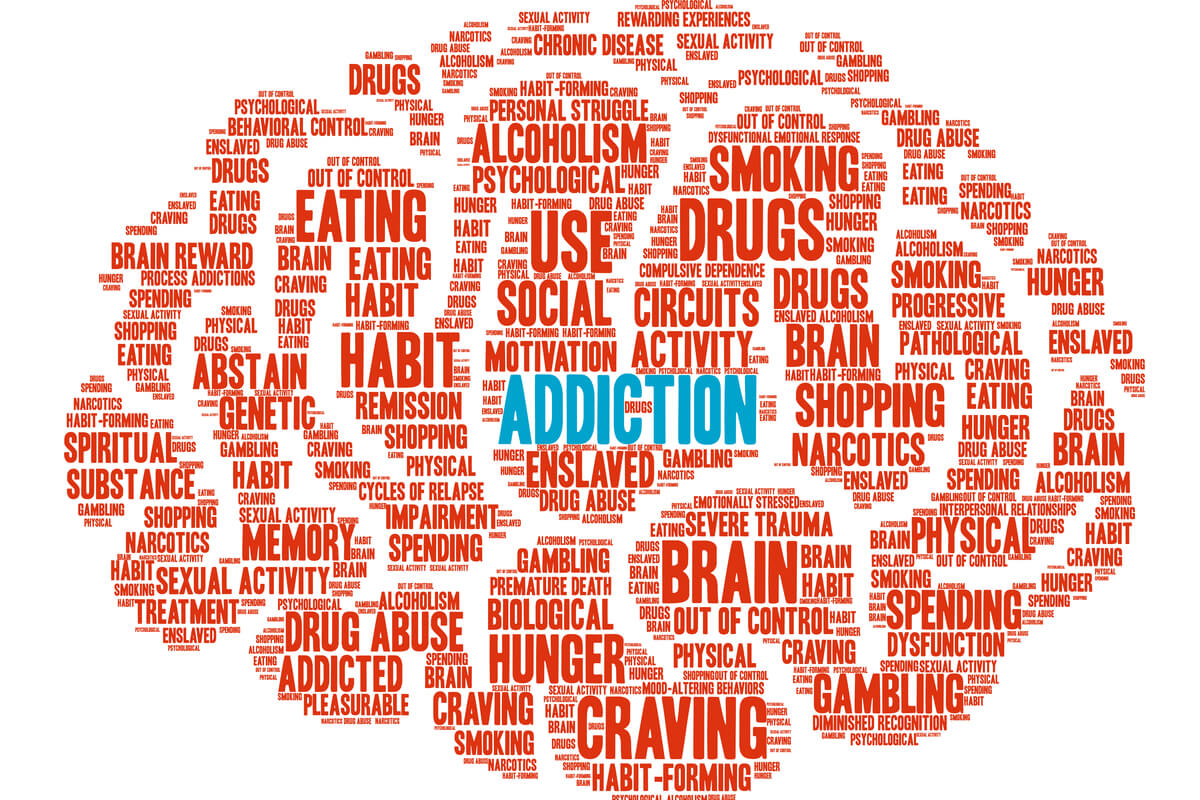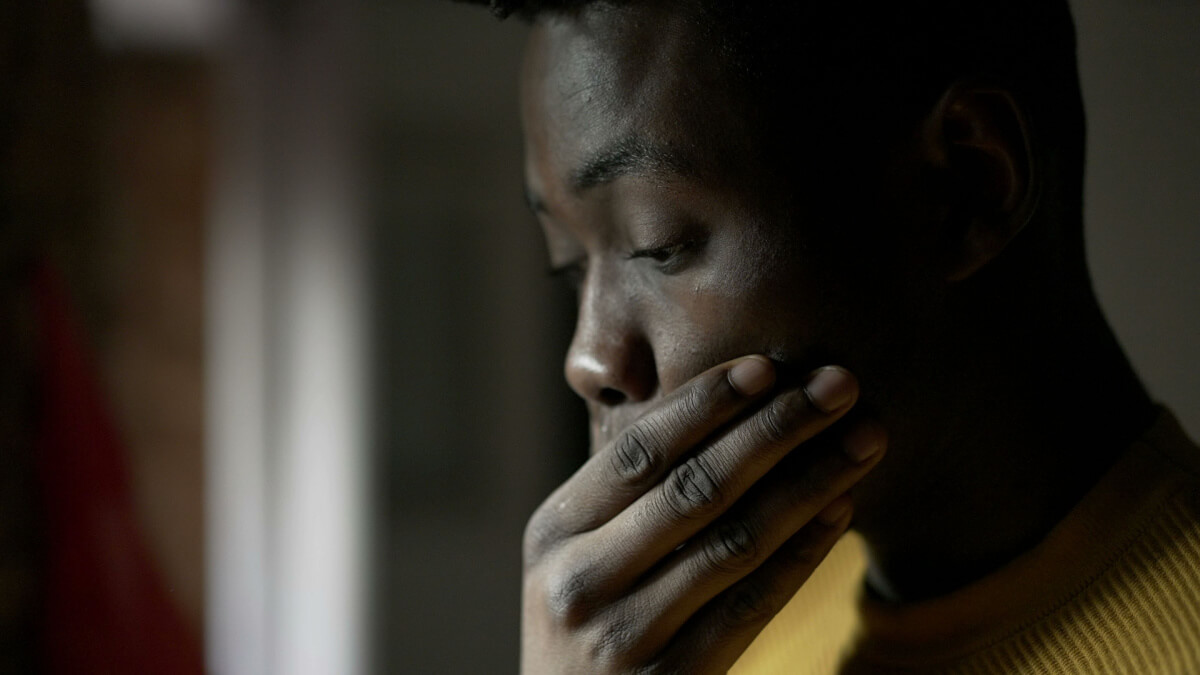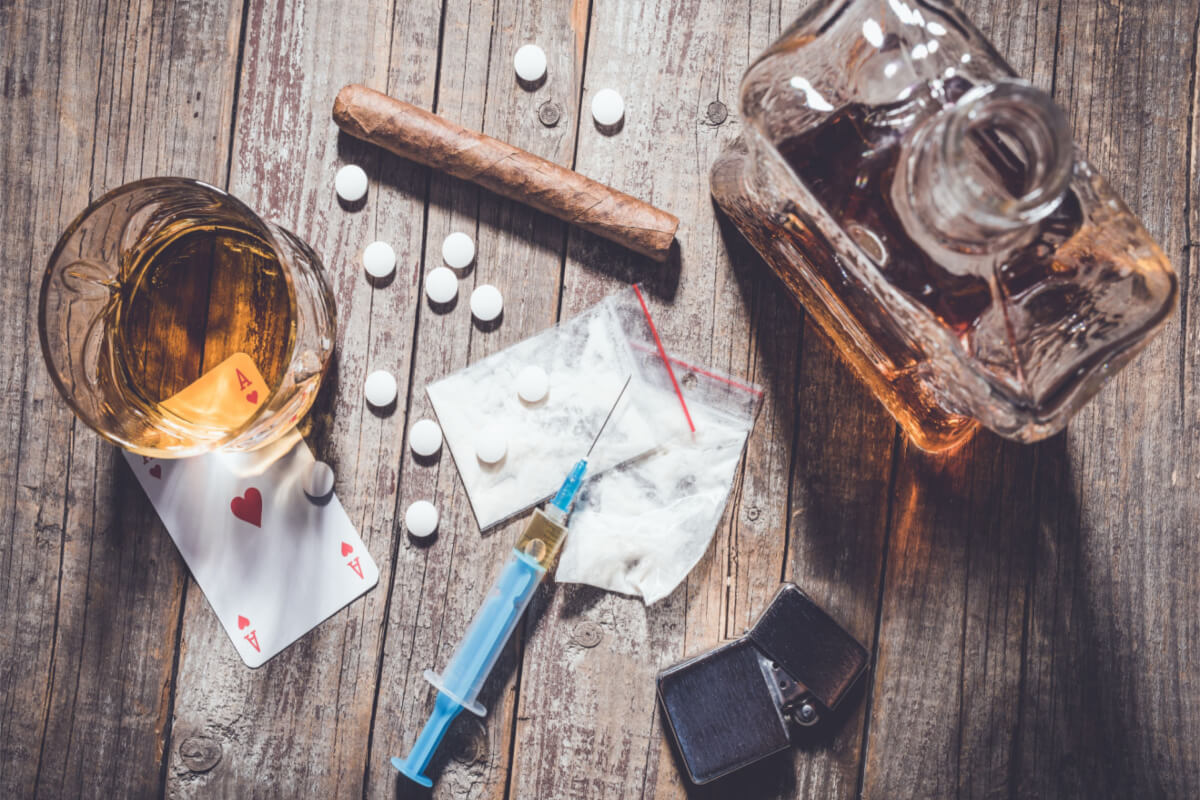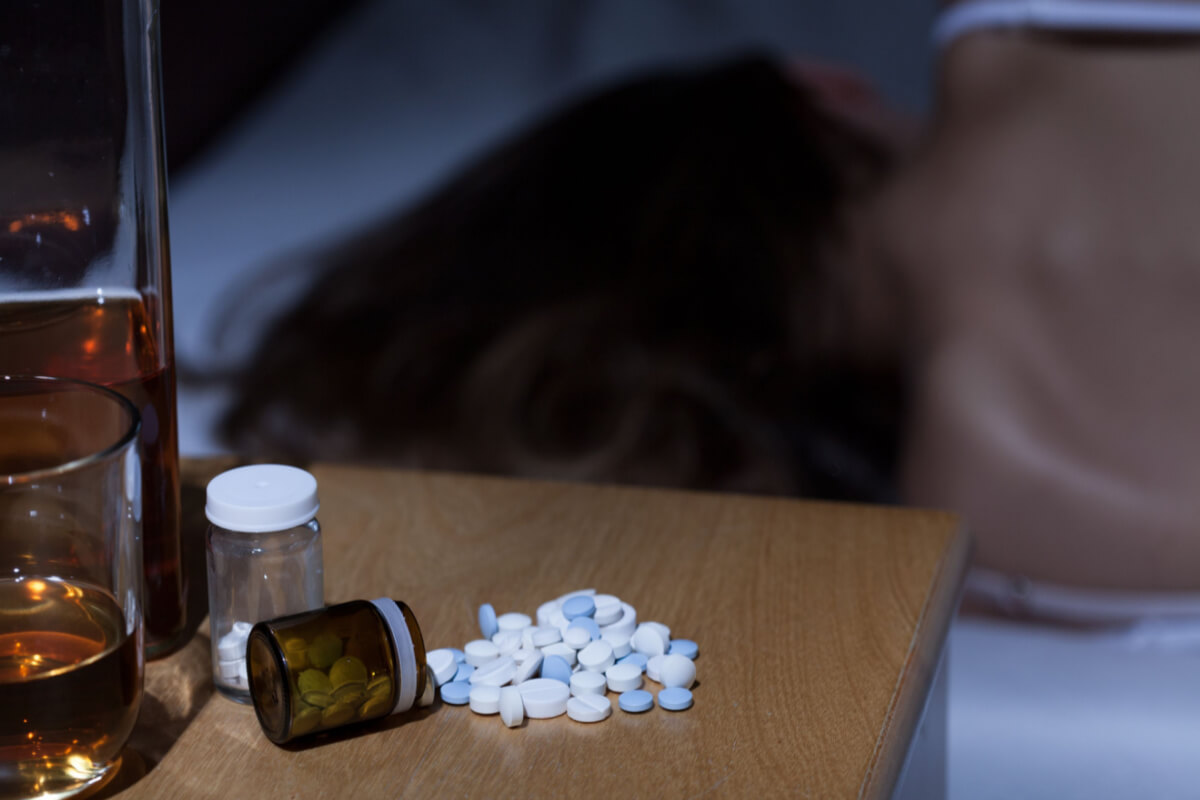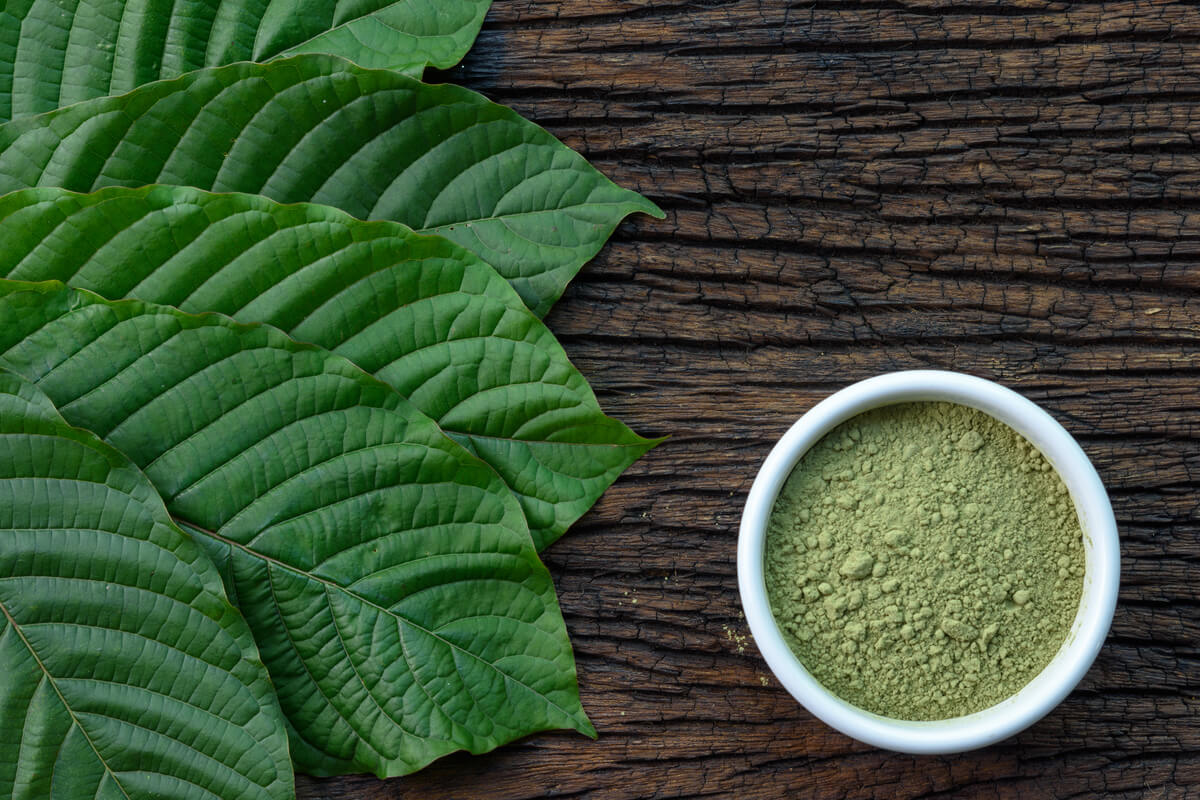
Borderline personality disorder (BPD) is a mental health condition that is very often linked to substance use disorders. In fact, data from a national survey suggests that up to 78% of people with BPD also have a substance use disorder (SUD) at some point in their lifetime.[1]
Defined by emotional dysregulation and an ongoing struggle with identity, many people who are living with BPD turn to drugs and or alcohol to help them manage their symptoms.
When both of these disorders occur at the same time, it can make treatment more difficult, especially if treatment focuses solely on one of the co-occurring disorders. For this reason, it is recommended that patients living with both disorders undergo treatment that addresses the characteristics of BPD as well as their substance misuse issues at the same time.
The Connection Between BPD & Addiction
The connection between BPD and addiction is complex. Research has found that people who are living with BPD are more likely to struggle with addiction compared to the general population. The reverse is also true—people who have a SUD are more likely to be living with BPD.[2]
This connection is believed to be due to high rates of impulsivity, rollercoaster emotions, and relationship difficulties that are commonly found with both disorders. Because these experiences are uncomfortable, people living with BPD may attempt to feel better by drinking or using drugs.
While people with BPD may be attempting to self-medicate certain symptoms of their disorder, drug and alcohol use worsen the situation. Not only does substance misuse usually make any behavioral problems worse and cause more interpersonal, financial and emotional problems, but it can also lead to the development of a SUD that can be life-threatening in its own right.
How Common Is Co-Occurring BPD & Substance Misuse?
Most people living with borderline personality disorder are also living with a co-occurring disorder, and substance misuse is one of the most common.[3] The rates vary considerably between studies, ranging from 0% to 53.19%.[3]
One of the best ways to manage the situation is to recognize the signs as early as possible and take immediate action, seeking treatment that effectively addresses both problems.
Signs & Symptoms of Co-Occurring BPD & Addiction
There are a number of signs and symptoms that can indicate that a person is struggling with both borderline personality disorder and addiction, including these:[1,4]
Intense & Unstable Relationships
It’s common for someone living with BPD to experience emotional upheaval and drama in their relationships, and they are likely to handle the roller coaster of emotions that occurs as a result of drinking or using drugs. Unfortunately, this only increases the volatility of the emotions and relationship.
For example, if someone is experiencing emotional dysregulation due to their BPD, they may fight with their partner and then go drink in order to get out of the house and feel better. While under the influence, they may then make choices that worsen their connection to their partner.
Emotional Dysregulation
Intense mood swings, an inability to manage anger and extreme emotional responses characterize BPD. Again, many people with BPD try to alter how they feel with drugs or alcohol with poor results.
For example, if someone living with BPD were to experience a deep loss, they may turn to alcohol as a means to help them grieve. However, they ultimately experience deeper depression due to physiological changes that occur with chronic substance use.
Impulsivity
It is not uncommon for someone living with either BPD or SUD to display extreme impulsivity.[5] That is, due to either disorder, they may be more likely to engage in risky behaviors than the average person.
When someone is living with both BPD and SUD, it is likely that their impulsivity will manifest as compulsive drug use even when it is clear getting high or drunk will only worsen the situation. For example, after getting an eviction notice from the landlord due to non-payment, an individual with co-occurring BPD and SUD may spend the next week getting high to manage feelings of fear, low self-esteem, or anger rather than working to pay the rent.
Self-Harm, Self-Sabotage & Suicidal Behavior
People living with BPD tend toward suicidal behaviors with or without substance use disorder. However, when they drink heavily or use drugs, the urge to hurt themselves in order to mitigate the pain can turn into an overdose or accidental death under the influence, such as a car accident due to driving while under the influence.[6]
For example, if someone living with BPD is struggling with low self-esteem after a romantic relationship goes wrong, they may drink or use drugs to manage the issue. While under the influence, those feelings may worsen, causing them to drink and use more than they can physically handle, triggering an overdose.
Frequent Crises
It is common for people living with BPD or SUD to often experience extreme crises, such as hospitalizations, evictions, arrests and more. When someone is dealing with both disorders, these events tend to happen more often.
Additionally, the individual will almost always put the blame on someone else. That is, they will characterize themselves as a victim rather than owning responsibility.
For example, someone may routinely lie about their substance misuse on the job to their boss and get fired. But even when it happens at each successive job, the person will blame their boss or the company for victimizing them unfairly.
Risk Factors
There are a number of risk factors for the co-occurrence of BPD and addiction. While the existence of one or more of these issues does not cause either disorder, a correlation has been found among patients with this dual diagnosis.
Risk factors for BPD co-occurring with SUD include the following:[7]
- A history of past trauma, including but not limited to physical, emotional or sexual abuse
- Genetic predisposition for the development of one or both disorders
- Childhood difficulties, including but not limited to unstable or unsafe home environment and neglect
- Co-occurring mental health disorders, such as mood disorders like depression and anxiety
- Living in an environment in which substance misuse, impulsive behaviors, and poor coping mechanisms are normalized by family and peers
- Experiencing low self-esteem, stigmatization and discrimination
Diagnosis & Assessment
Both BPD and SUD are usually diagnosed based on a psychological evaluation performed by a medical professional. During this evaluation, the doctor may notice physical signs of ongoing substance misuse and/or self-harm. They may ask questions about medical history, drug use history and current problems and then come to the conclusion that BPD and SUD are the primary issues.
Though a psychological evaluation occurs in response to a patient’s request, it can sometimes be spontaneous, especially if there is concern that the patient is suicidal or drug-seeking. In order to get an accurate diagnosis, it is important to be completely honest with any medical professional offering a psychological evaluation.
Common Substances of Misuse
Though everyone is different and will turn to different drugs depending on the effect they are seeking and what is available to them, substances that are commonly misused by those with BPD include alcohol, cocaine and opioids, including heroin.[3] In many cases, the substances most commonly misused by those living with BPD and SUD are simply the easiest for them to access.
Is Recovery Possible for Individuals With BPD & Addiction?
Though it is generally more difficult to treat people with dual diagnoses compared to those living with SUD alone, recovery is possible for people who have both BPD and addiction.[9] In order to increase the chances of a positive result in recovery, it is important for individuals to seek professional help for both BPD and SUD at the same time rather than trying to treat one disorder before the other.[10]
Support of Family & Friends
Family and friends can play a positive role in their loved one’s recovery by learning about the nature of addiction and BPD and working together with treatment professionals to provide a safe and supportive environment for their loved one in recovery. Additionally, they can take these steps:
- Avoid drinking or using drugs around their loved ones and lock up any addictive medications, such as prescription painkillers or sedatives.
- Avoid harassing the person in treatment or judging their choices, understanding that they must be the ones in charge of their own recovery.
- Seek out personal therapy and support.
- Understand that they must maintain their own goals as their primary objective in life.
Treatment Centers & Other Resources
For someone with both BPD and SUD, it is essential that any treatment program address both disorders comprehensively. One cannot be successfully treated without the other. A treatment center should be equipped to handle treatment for both conditions.
Conclusion
If you or someone you love is living with BPD and addiction, seek treatment as soon as possible. Remember that you are not alone. BPD and SUD commonly co-occur, and there are tools and resources available to help that can be effective, especially when you choose integrated treatment.
Transitioning into recovery starts with recognizing the signs and symptoms of both disorders and seeking out treatment as soon as possible. Reach out for comprehensive help today.

Reviewed By Peter Manza, PhD
Peter Manza, PhD received his BA in Psychology and Biology from the University of Rochester and his PhD in Integrative Neuroscience at Stony Brook University. He is currently working as a research scientist in Washington, DC. His research focuses on the role ... Read More
- Ärzteblatt DÄG Redaktion Deutsches. Borderline personality disorder and comorbid addiction (18.04.2014). Deutsches Ärzteblatt. Published April 29, 2021. https://www.aerzteblatt.de/int/archive/article/159354
- An Introduction to co-occurring borderline personality disorder and substance use disorders. Substance Abuse and Mental Health Services Administration. Published Fall 2014. Accessed February 2, 2024. https://store.samhsa.gov/sites/default/files/sma14-4879.pdf
- Trull TJ, Freeman LK, Vebares TJ, Choate AM, Helle AC, Wycoff AM. Borderline personality disorder and substance use disorders: an updated review. Borderline Personality Disorder and Emotion Dysregulation. 2018;5(1). https://doi.org/10.1186/s40479-018-0093-9
- Kulacaoglu F, Kose S. Borderline personality disorder (BPD): In the midst of vulnerability, chaos, and awe. Brain Sciences. 2018;8(11):201. https://doi.org/10.3390/brainsci8110201
- Bornovalova MA, Lejuez CW, Daughters SB, Zachary Rosenthal M, Lynch TR. Impulsivity as a common process across borderline personality and substance use disorders. Clinical Psychology Review. 2005;25(6):790-812. https://doi.org/10.1016/j.cpr.2005.05.005
- Boylan K, Chahal J, Courtney DB, Sharp C, Bennett K. An evaluation of clinical practice guidelines for self-harm in adolescents: The role of borderline personality pathology. Personality Disorders: Theory, Research, and Treatment. 2019;10(6):500-510. https://doi.org/10.1037/per0000349
- Wapp M, van de Glind G, van Emmerik-van Oortmerssen K, et al. Risk factors for borderline personality disorder in treatment seeking patients with a substance use disorder: An international multicenter study. European Addiction Research. 2015;21(4):188-194. https://doi.org/10.1159/000371724
- Frankenburg FR, Fitzmaurice GM, Zanarini MC. The use of prescription opioid medication by patients with borderline personality disorder and axis II comparison subjects. The Journal of Clinical Psychiatry. 2014;75(04):357-361. https://doi.org/10.4088/jcp.13m08557
- Parmar A, Kaloiya G. Comorbidity of personality disorder among substance use disorder patients: A narrative review. Indian Journal of Psychological Medicine. 2018;40(6):517-527. https://doi.org/10.4103/IJPSYM.IJPSYM_164_18
- Iqbal MN, Levin CJ, Levin FR. Treatment for substance use disorder with co-occurring mental illness. FOCUS. 2019;17(2):88-97. https://doi.org/10.1176/appi.focus.20180042
Download Our Free Program Guide
Learn about our program, its effectiveness and what to expect
Related articles
Imagine what’s possible on the other side of opioid use disorder.
Our science-backed approach boasts 95% of patients reporting no withdrawal symptoms at 7 days. We can help you achieve easier days and a happier future.

